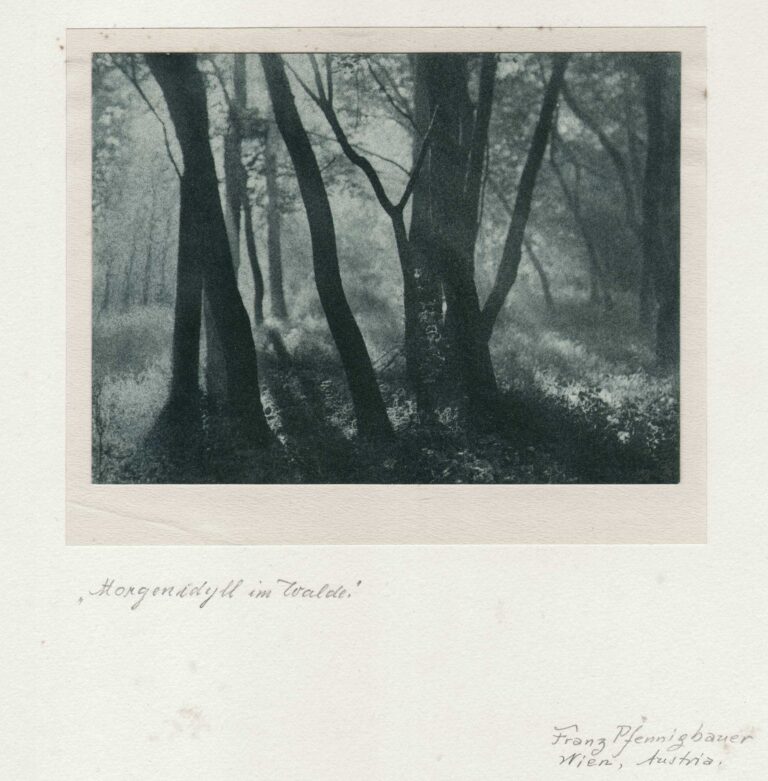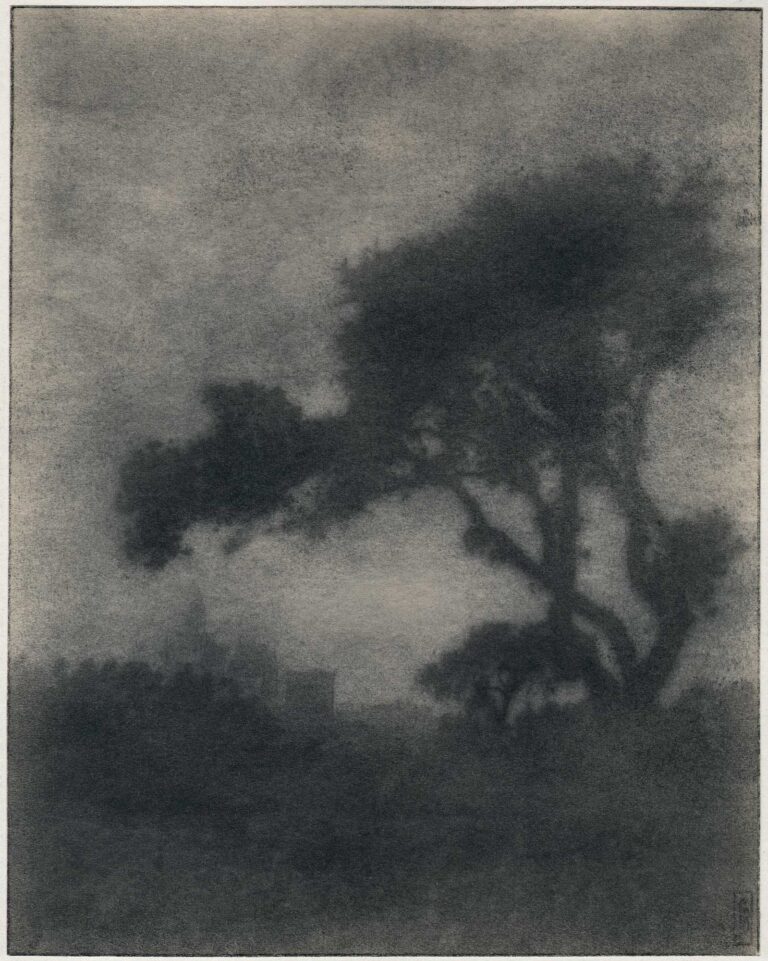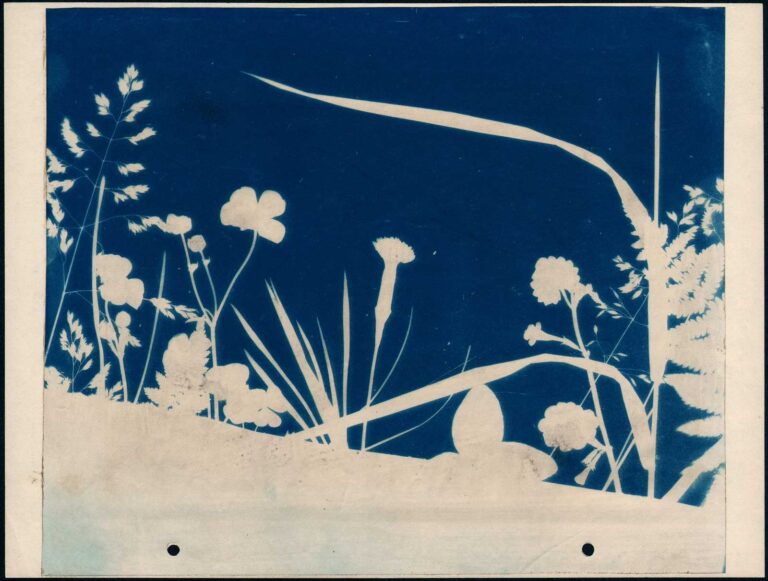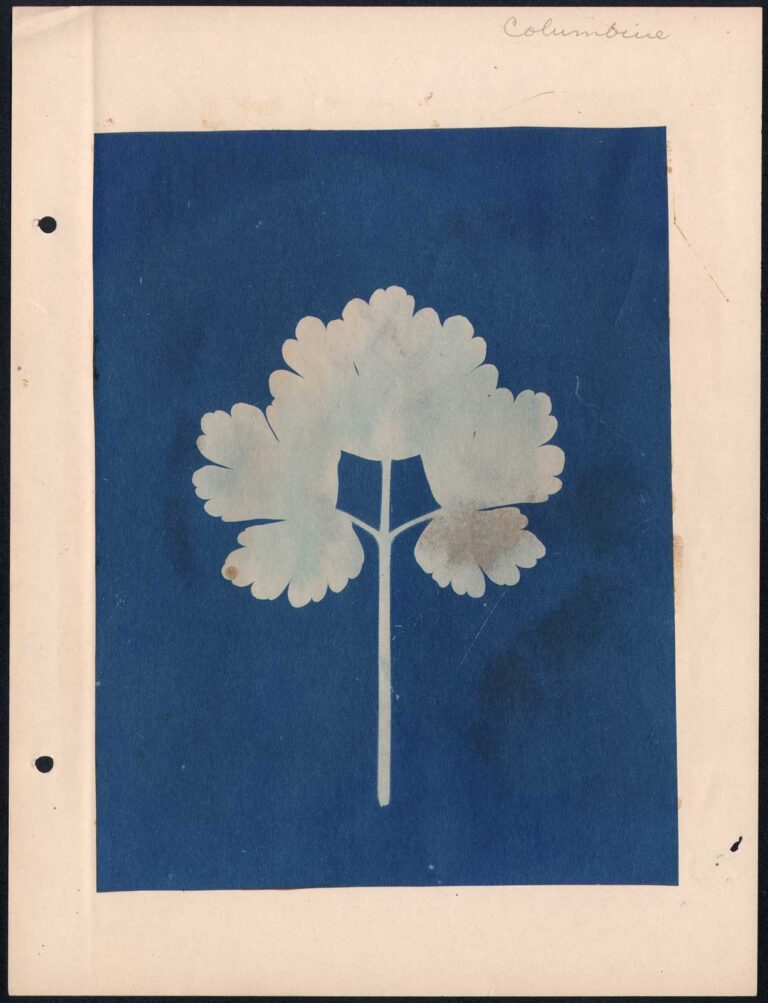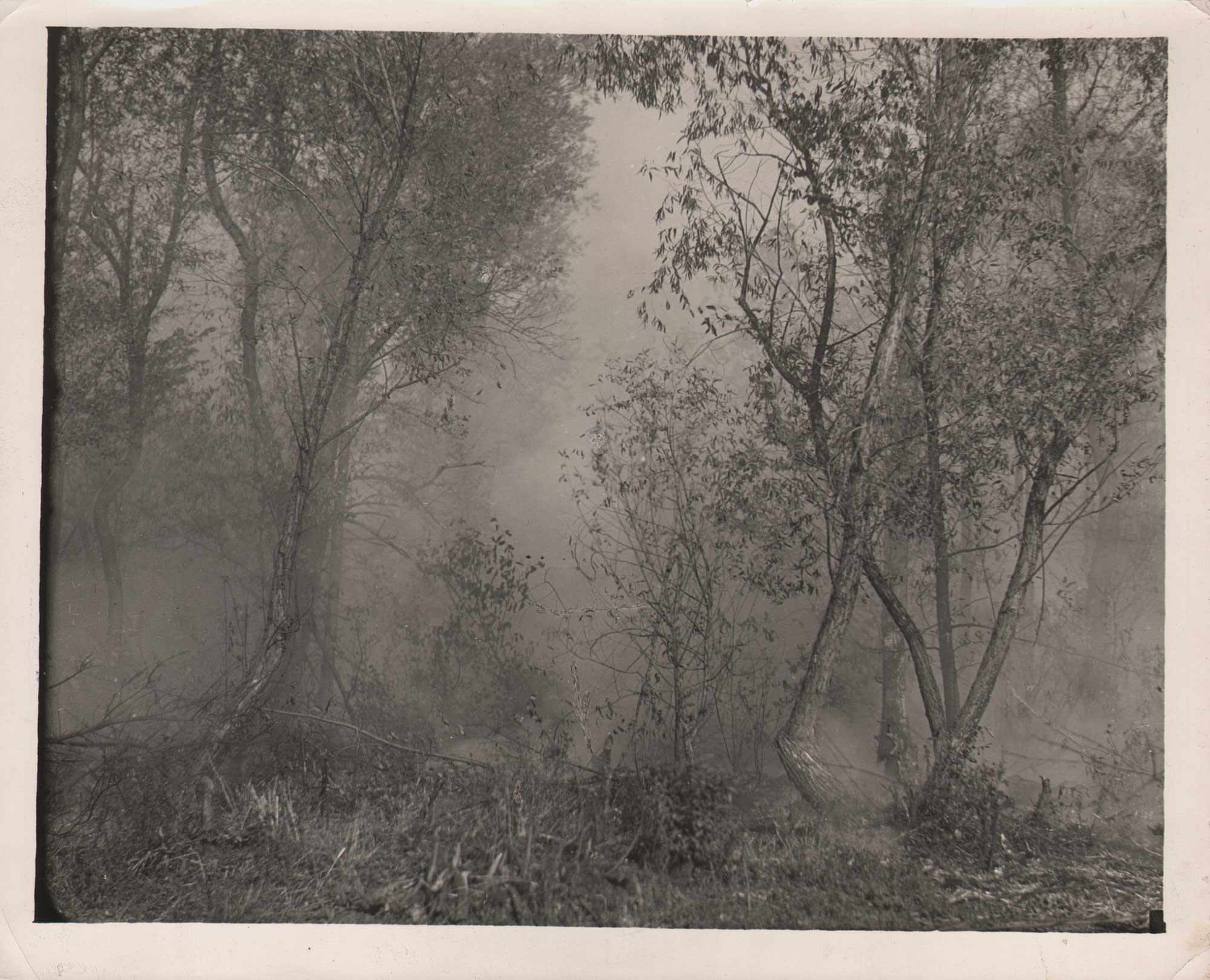
Pictorial Treatment of Brush fire
This uncommon pictorialist landscape, with smoke from a brush fire enveloping a stand of trees, was most likely taken in the 1920’s or earlier. Printed and personally signed by the artist, it was intended for possible publication in Camera Craft magazine.
Wilbur Heber Porterfield: 1873-1958
A short biography of the artist courtesy of the Burchfield Penney Art Center at Buffalo State University:
Wilbur H. Porterfield was a founding member of the Photo-Pictorialists of Buffalo, established in 1906 to promote artistic photography in upstate New York. Their goal was to elevate photography as an art form by adopting characteristics associated with painting, so they employed a soft focus, classical compositional structure, traditional subject matter (portraiture, still life and landscape), and in some cases, hand manipulation of the print or negative.
Porterfield gained an international reputation for his style of photography that often portrayed the Western New York landscape, and his photographs regularly appeared in The Sunday Courier-Express in a pictorial spread called “As Porterfield Sees It” until his death in 1958. (1.)
The following biography from Wikipedia has been translated:
Wilbur Porterfield lost his father in an oil well explosion at the age of five. He left school at the age of twelve and took a job with Western Union in Bradford, Pennsylvania. In 1888, he and his mother moved to Buffalo, New York, where, with a brief interruption, he worked for 33 years in the lithographic workshop of Cosack & Company . In 1901, Wilbur Porterfield began as an amateur photographer using a Cycko camera. He joined the Buffalo Camera Club , becoming its president in 1905. A year later, he left the club and founded the Photo-Pictorialists of Buffalo , a group modeled on the Photo-Secession initiated by Alfred Stieglitz . Their goal was to establish photography as an art form by adopting features of painting such as soft focus , classic compositional structures, and traditional subjects such as portraits, still lifes, and landscapes. Some of his works, such as The Way to the Valley (c. 1917), are in the collection of the Minneapolis Institute of Art . Later, Wilbur Porterfield was involved in the founding of similar groups in Pittsburgh and Los Angeles.
After leaving Cosack & Company, Wilbur Porterfield became a professional photographer and joined the gravure department of the Buffalo Courier , which later became the Courier Express . His photographs appeared regularly in the Sunday supplement under the heading “As Porterfield Sees It ,” which continued for ten years after his death under the title ” As Porterfield Saw It .” He traveled the region by bicycle—a total of about 65,000 miles in 15 years—and later by car, seeking ideal subjects and lighting conditions.
His early works were created using the pigment printing process , which allowed the photographer to edit the images with a brush during development. In 1907, he won a photography competition and invested part of the prize money in a Graflex camera.
Wilbur Porterfield’s photographs, often depicting the landscape of Western New York, achieved international acclaim. Between 1913 and 1920, more than 10,000 of his prints were shown in over 270 exhibitions, and he received more than 80 awards. In 1921, he had his first solo exhibition at the Albright Art Gallery —the first photographer ever to do so. A second exhibition followed in 1941. -Wikipedia, accessed May, 2025
- Exhibition biography: Shadows and Reflections: Pictorial Photography by Wilbur H. Porterfield: Oct 23, 1999 – Feb 6, 2000: Organized by Gillian Greenhill Hannum for the Palmer Museum of Art at Pennsylvania State University.
